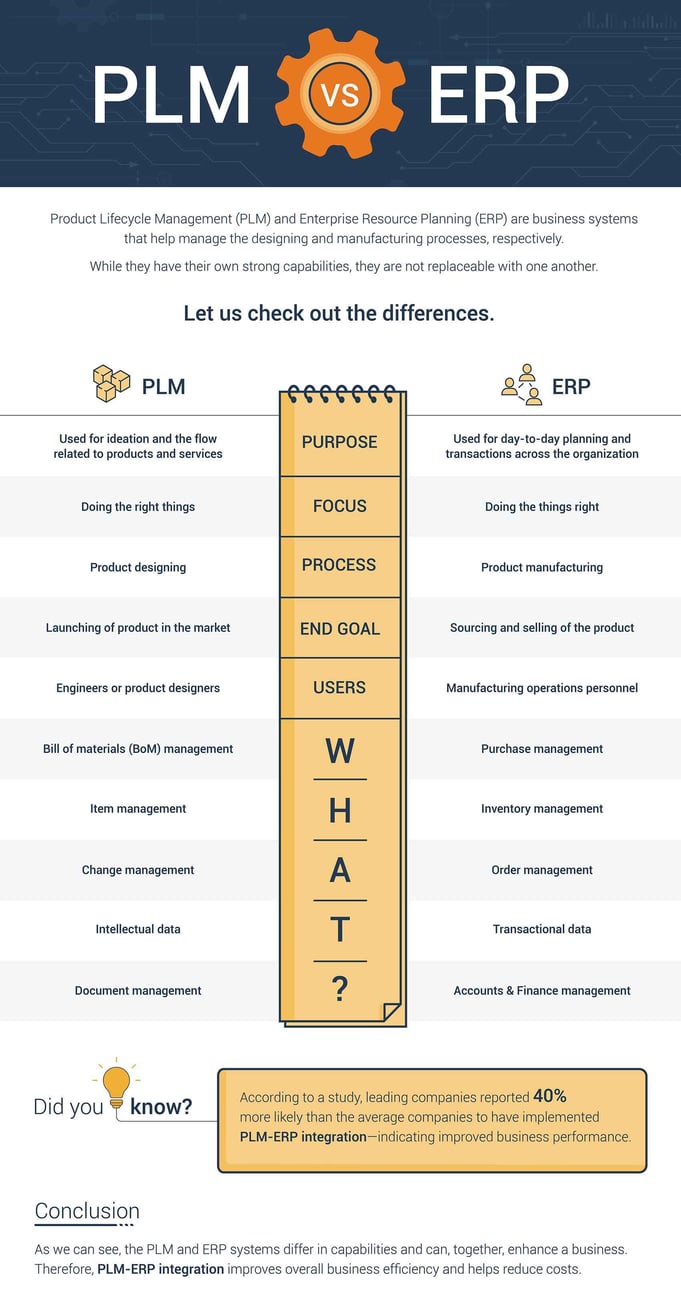How to Select the Right PLM-ERP Integration Solution for Your Manufacturing Business
 Peter van Leeuwen
Peter van Leeuwen
Table of contents
Product Lifecycle Management (PLM) and Enterprise Resource Planning (ERP) are two different yet essential software required to develop and launch viable products in the market. PLM oversees the designing process of a product while an ERP helps manage its production. They are complementary to one another and enhance the creation and supply chain of the product(s). That’s how a PLM and ERP integration solution has become a vital tool for discrete manufacturers and most consumer brands today. At STAEDEAN, we’ve been helping our manufacturing customers realize as well as make the most of the benefits of PLM-ERP integration. We see customers seeking a solution to their business challenges caused by gaps between designing and manufacturing systems. They improved their supply chain by implementing PLM and ERP integration.
Just to give you an idea, here’s how a PLM and ERP integration supports supply chain agility. The process of creating a successful product includes both its designing as well as manufacturing. While it begins within the PLM system where the product is ideated, designed, and developed, it moves on to the ERP systems where it is manufactured, launched, packed, distributed, and delivered. As you can imagine, the flow of product data between the two platforms, continuously and seamlessly, is crucial to ensure the product’s success. However, if you’re still not sure how a PLM system is different from the ERP system, here is a comparison of the two to see how each adds value separately and how integrating them is essential for a seamless and agile supply chain.
PLM-ERP solution selection
The above infographic clearly shows why it is crucial more than ever to integrate both the PLM and ERP systems to run a successful manufacturing business. Now that we understand how PLM and ERP systems differ in their capabilities and the greater business efficiency they can offer when combined, let’s look at how to go about selecting the right PLM-ERP solution for your business.
As with any solution selection process, asking a few questions to your vendor or considering some factors before finalizing on one helps you get the best ROI on your PLM-ERP integration solution. For instance, you may already have PLM or ERP software in place, or you may have neither. So, depending on the stage you’re at in the buying journey, here are a few questions to ask yourself while planning to implement a PLM-ERP integration:
-
Which PLM and/or ERP software do I have in place?
-
Does my engineering department impact my ERP logistic processes?
-
Are there any PLM or ERP specifications of compatibility factors I need to consider before selecting the integration solution?
-
Is a standard integration available for my PLM system?
-
What is the best combination of ERP and PLM solution for my business?
-
What value does the PLM-ERP integration add to my business?
-
7Which PLM system best fits the size of my company?
Selection questions for a PLM-ERP integration:
1. Is the solution offered globally?
2. Is the integration solution user-friendly and scalable?
3. How experienced is the vendor?
4. How close is the cooperation with Microsoft on product roadmap?


